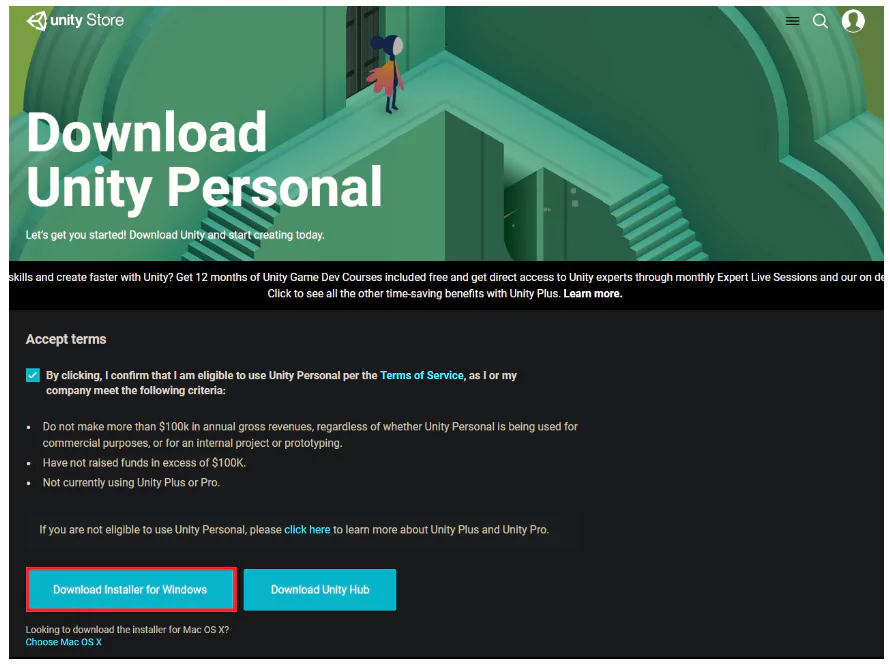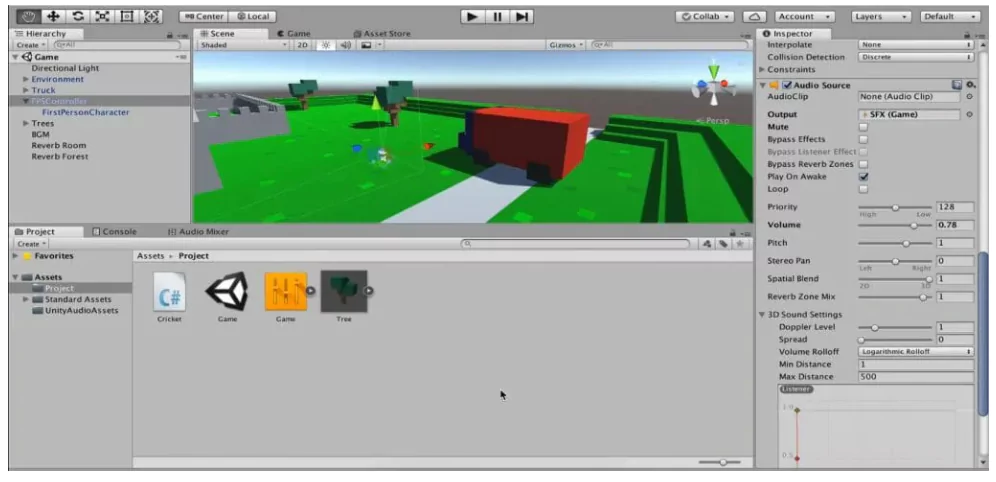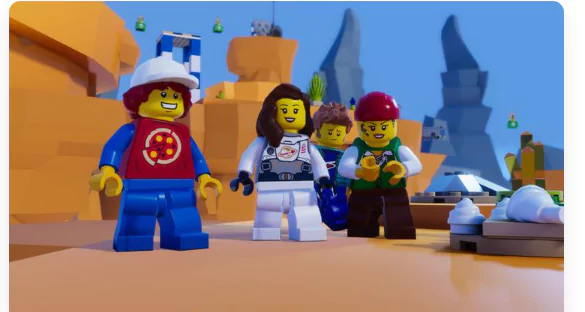
Update: This article was last updated on 3rd September 2024 to reflect the accuracy and up-to-date information on the page.
Are you looking for a way to create your very own game? Unity is one of the best game engines out there that can help you do just that. As per the statistics, 61% of the developers surveyed use Unity as their game engine of choice, and it is also the second most popular mobile ad network.
However, making a Unity Game can be challenging. So, we have come up with a few easy steps so that you can learn how to build a game from scratch.
From getting acquainted with Unity and learning how to code in C# to develop a prototyping process and designing an original storyline and characters, we will provide you with all the knowledge you need to get your game off the ground.
Step 1: Getting Ready for the Journey

- Editions
- Personal for amateurs
- Plus or Pro for more features
Install Unity after downloading it: Select the edition that best meets your needs. Learn about the Inspector window, Scene View, and Hierarchy panel on the interface; they will be your dependable allies.
Acquire Knowledge of Terminology: The main scripting language for Unity is C#, but don’t be afraid to learn it. Start using online classes, simple tutorials, or visual scripting tools such as Bolt. Overcome the coding obstacles bit by bit.
Collect Your Resources: A foundation is necessary for any world. Use the Unity Asset Store or other internet resources to locate 3D models, textures, animations, and sound effects. Keep in mind that high-quality assets improve your game, so pick carefully!
Similar Read: How to Support Your Child’s Learning with Active Involvement
Step 2: Building Your Universe (Block by Block)

Make a Scene: This is the area on your canvas where your game takes place. To create a mood, sculpt landscapes with Terrain tools, add items from the Asset Store, and change the lighting and atmosphere.
Animate Characters: Import character models, give them animations, and use scripts to specify their motions. To keep your gamers interested, give them motivations, personalities, and even voices.
Create the gameplay: Describe your game’s core elements. Is it about solving puzzles, becoming better at a skill, or destroying enemies? To develop a fun gameplay loop, define goals, including win/lose criteria, and outline the essential mechanics.
Step 3: Exposing the Narrative

Writing the Adventure’s Screenplay: Your world comes to life using C# scripts. As your tale progresses, use them to manipulate item interactions, enemy behavior, character movement, and event triggers. Play around and never forget that there’s a helpful online developer community there to help you at all times.
Creating the Levels: Create challenging and captivating levels for gamers. To keep people interested, use barriers, platforms, power-ups, and secrets. Since level design is an art form, feel free to express yourself!
Shining the Gem: Test, tweak, and polish! Make sure your game is fully tested, find any errors, and change the pace, difficulty, and balance. Incorporate acoustic and visual elements to fully submerge gamers in your virtual environment.
Similar blog: 5 REASONS WHY FINANCIAL EDUCATION IS IMPORTANT FOR KIDS
Step 4: Presenting Your Work to the World

Exporting Your Artwork: Once you’re happy, Unity lets you export your game to several different platforms, including mobile and PC/Mac. As you read the guidelines unique to your platform, be ready to release your invention to the world!
Beyond Marketing: Tell others about your game! Get comments, interact with other developers, and post them on social media. Recall that the journey doesn’t end with release. Continue refining and upgrading, and even begin work on your next masterpiece!
Remember, my dear explorer, that the road to game creation is littered with obstacles and discoveries. Never lose sight of your goals, embrace the learning process, and acknowledge little accomplishments. You may make your dream game a reality with hard work and enthusiasm, and who knows—you could even inspire excitement and happiness in the hearts of gamers everywhere. What are you waiting for, then? Start creating your ideal game right now by jumping into Unity and letting your creativity run wild!
Extra Advice:
- To communicate with other Unity developers, exchange questions, and discuss your work, join online groups and forums.
- Make use of the plethora of online lessons and tools that are accessible, such as Moonpreneur and Unity Learn.
- Try new things and experiment without fear. Unity’s versatility is what makes it so beautiful, so follow your imagination.
- Above all, remember to enjoy yourself! Don’t let failures deter you from enjoying the process of creating games; it should be entertaining. Take what you can from them, go forward, and acknowledge your accomplishments as you go.
To Summarize
Creating a Unity Game is an incredibly rewarding experience. From getting acquainted with the platform to learning how to code in C#, to designing an original storyline and characters, there are plenty of exciting challenges along the way. With Unity’s powerful engine and user-friendly interface, you can create high-quality games that will impress your audience.
Moonpreneur is on a mission to disrupt traditional education and future-proof the next generation with holistic learning solutions. Its Innovator Program is building tomorrow’s workforce by training students in AI/ML, Robotics, Coding, IoT, and Apps, enabling entrepreneurship through experiential learning.

























Which is more powerful Unity or Unreal?
In my view, C# (Unity) tends to excel in mobile and web applications, as well as lighter desktop products. On the other hand, C++ (Unreal) shines in heavy-weight, large-scale projects demanding high hardware performance. Thus, when comparing Unity versus Unreal performance, the latter often holds the upper hand.